 |
|
|
| Station |
Historical
Narrative |
| NW 5th & Glisan |
Leaving NW 5th
& Glisan: "Union
Station
was the brainchild of rail baron Henry Villard who
suffered financial
setbacks and lost ownership of the project before it was
completed in
1896. The Richardsonian Romanesque structure was
begun in 1890
and survived Portland's infamous 1894 flood during
construction." |
|
| NW 5th & Couch |
Proceeding
southbound on NW 5th Ave.: "We are now
travelling along the edge of Portland's Chinatown.
This area was a center for railroading, lumbering and both
river and
ocean-going ships. It was also known for bawdy
houses, saloons
and gambling parlors." |
 |
| SW 5th & Oak |
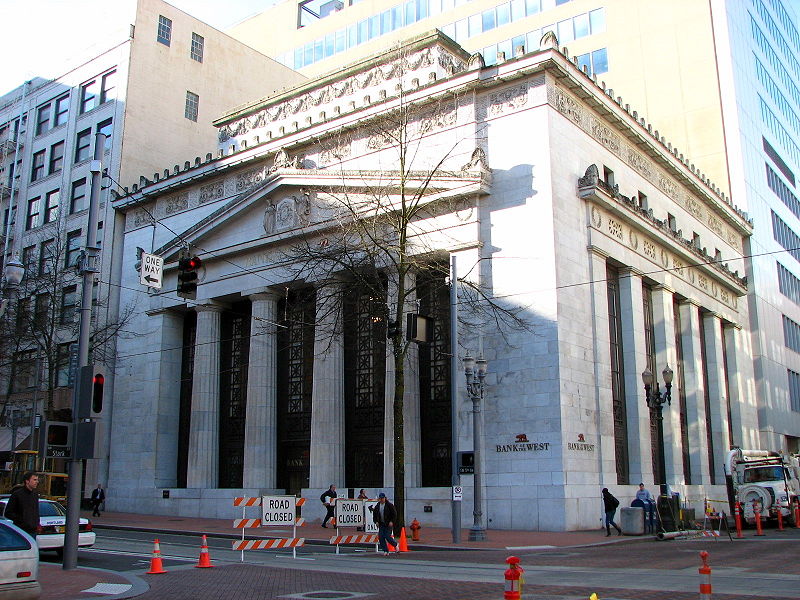 |
Southbound on SW 5th
at Stark.: "The old First National Bank Building
ahead on our left was the first national bank west of the
Rocky
Mountains. It as built in 1916 in a style
reminiscent of the
Lincoln Memorial in Washington D.C. and many think it is
the finest
example of Roman architecture in the West." |
| SW 5th Pioneer Place |
Southbound on SW 5th
leaving Oak St.: "On our right is the Pioneer Courthouse, which
offered a splendid view of the countryside from its cupola
when built on the edge of town in 1869."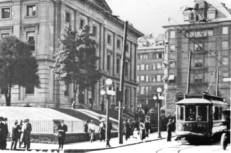 |
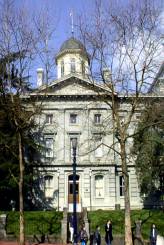 |
| SW 5th & Jefferson/ City Hall |
Southbound on SW 5th
at Madison: "The Renaissance Revival style Portland City Hall
was completed in 1895. This early steel-framed
structure was one
of the first buildings in the Northwest to feature
electric lights and
central heat. It was considered to be fireproof." |
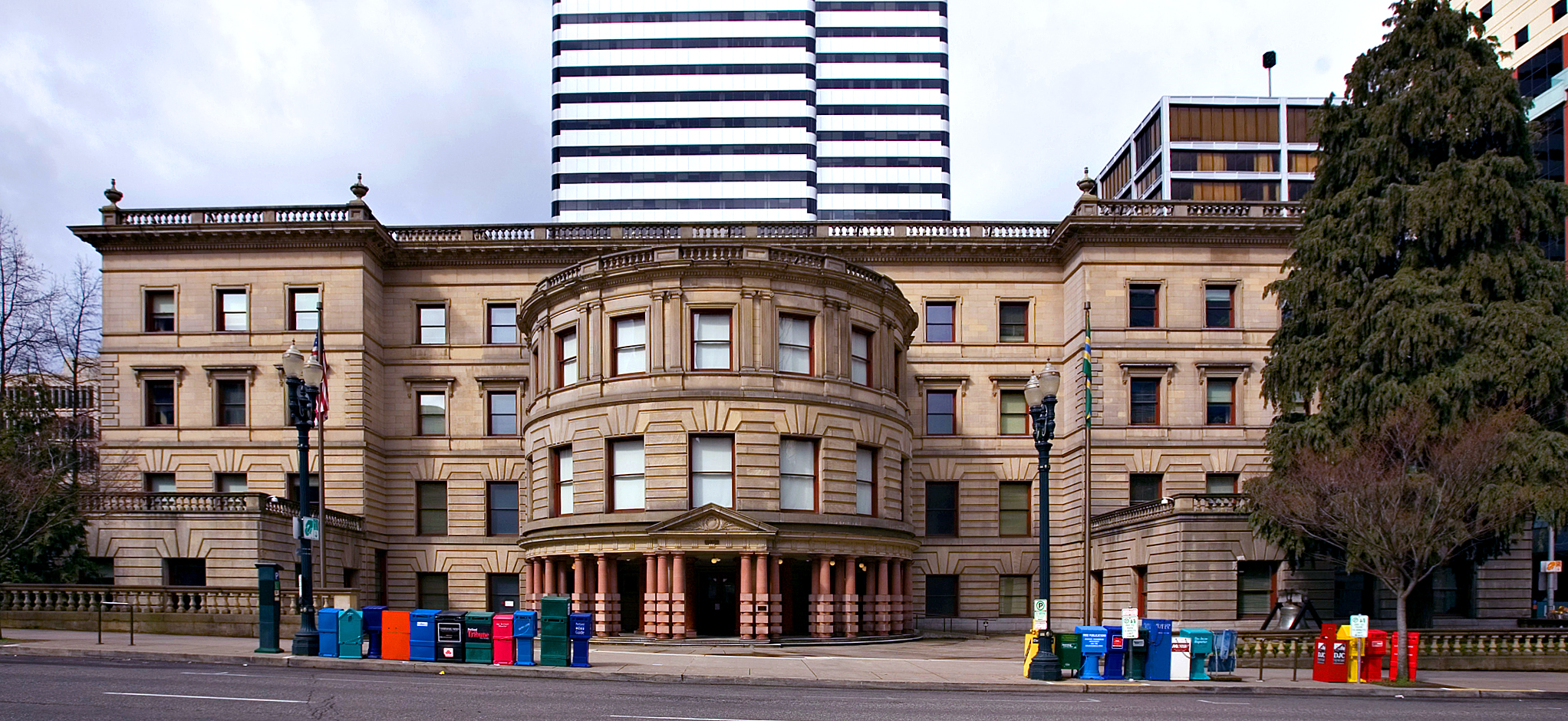 |
| SW 5th & Mill/ PSU Urban Center |
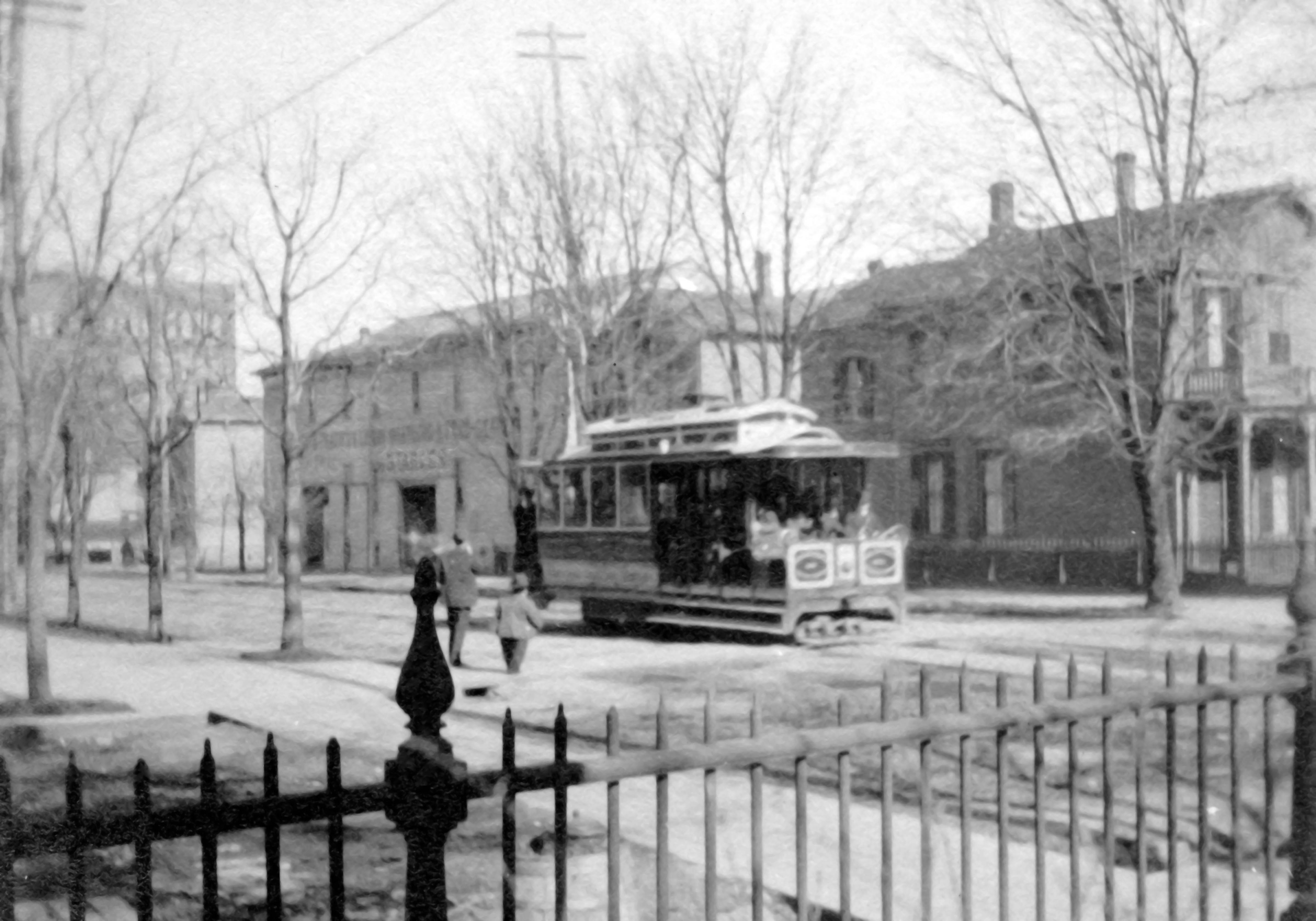 |
Southbound on SW 5th
approaching PSU: "Fifth Avenue has a long
railway history. Cablecars
ran here for 15 years, starting in 1890. They were
replaced by
the very trolleys that the car you are riding in was
patterned after;
the Council Crest cars. Portland cablecars were
ordered from the
same firm that built San Francisco's historic cars and
look just like
them." |
| SW 6th &Montgomery /PSU Urban Center |
Northbound on SW 6th
at Mill: "Now a well-regarded urban
university, Portland
State
began as a non-accredited Junior College. It can
trace its roots
to an extension center wiped out in the Vanport Flood of
1948. By
1952 classes had found a new home in the former Lincoln
High School." |
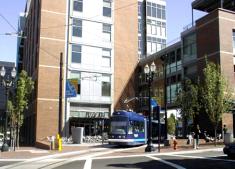 |
| SW 6th
& Madison |
Northbound on SW 6th
at Jefferson: "The University Club on our right is a rare example of Jacobethan style. It was built in 1919 for a socially prominent club founded in 1898. Next door is the city's oldest continuously fashionable apartment building, and one of the most ornate, the Ambassador Apartments built in 1922. |
|
| SW 6th
Pioneer Courthouse |
Leaving Pioneer
Courthouse: "The cream colored tiles on the
buildings across the street identify them aws part of the
Terra Cotta Historical
Area. The "last of the handmade buildings"
include Macy's,
Portland's oldest and largest department store. It
was built in 1909 as Meier
& Frank. |
 |
| SW 6th
& Pine |
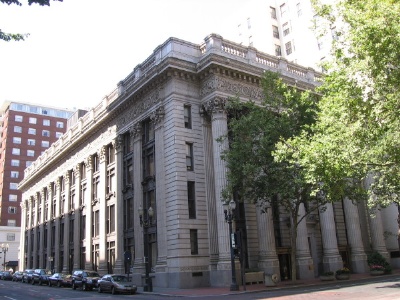 |
Northbound on SW 6th
at Stark: "Well-known architect A.E. Doyle
designed two bank buildings along the city's financial
blocks: The U. S.
National Bank was built in 1916 and the old Bank
of California next door in 1924. The Bank of California is
considered Portland's most impressive Italian Renaissance
building." |
| NW 6th
& Davis |
Northbound on NW 6th after
Burnside: "We are now back in Chinatown.
Portland's Chinatown was once bigger than any other on the
West Coast
outside of San Francisco. It sported a Erickson's
Saloon, which
had the 'longest bar in the world.' It was also
infamous for
shanghaiing of sailors. The Classical Chinese Garden is
now in this
district." |
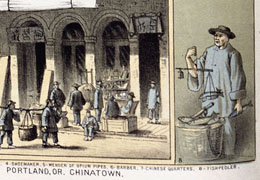 |
| W 6th
& Hoyt/ Union Station |
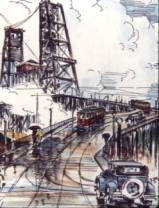 |
Northbound on NW 6th
at Glisan: "The Steel Bridge to our far right served the
Northwest's first electric trolley. The Albina Line
began running across this bridge to Albina in 1889.
The Steel
Bridge also holds the distinction of being the world's
only double
decked, telescoping, lift span." |
Go to Vintage Trolley Schedule
Go to Vintage
Trolley Route Map
© ETConsulting 2013
